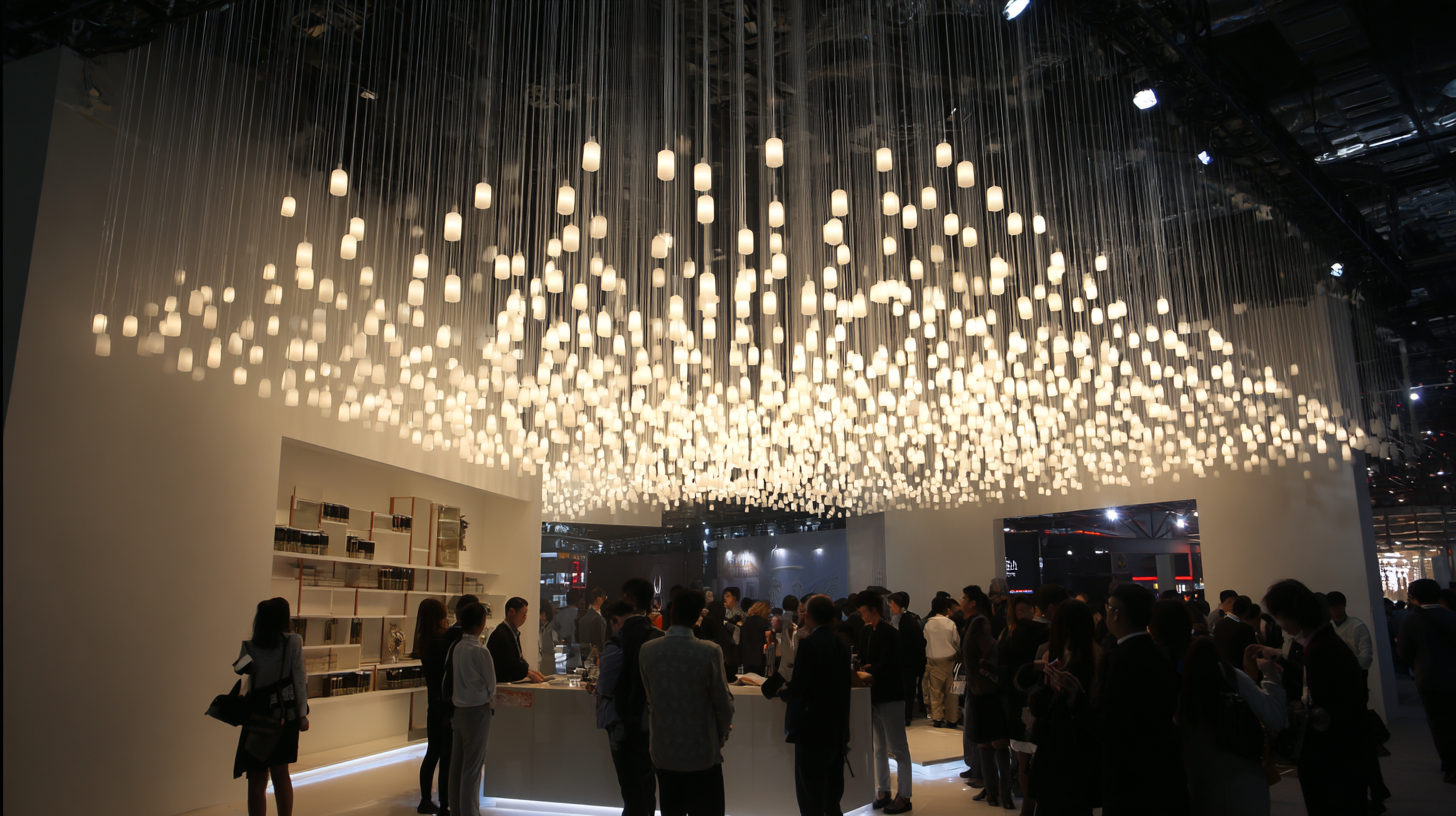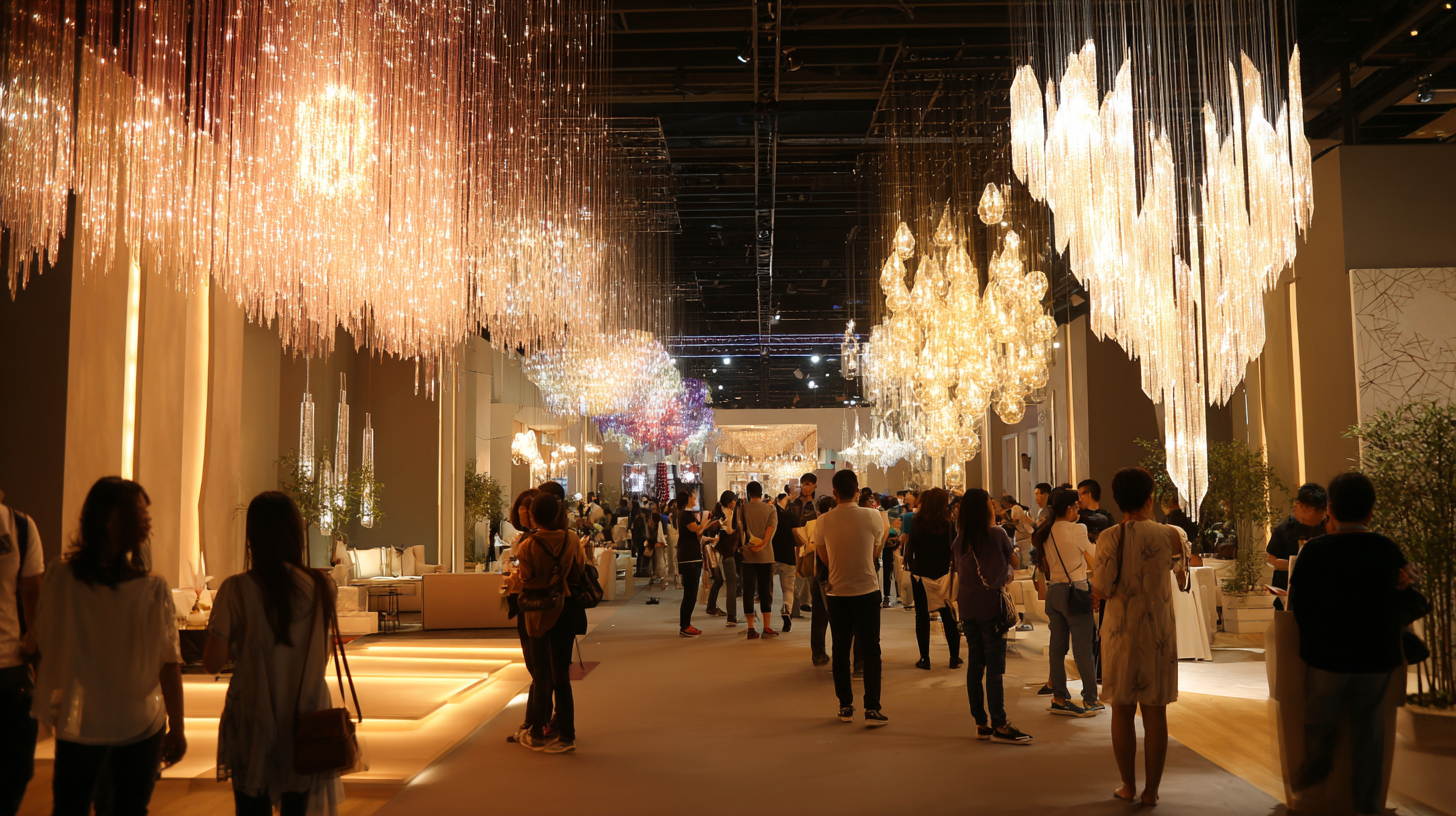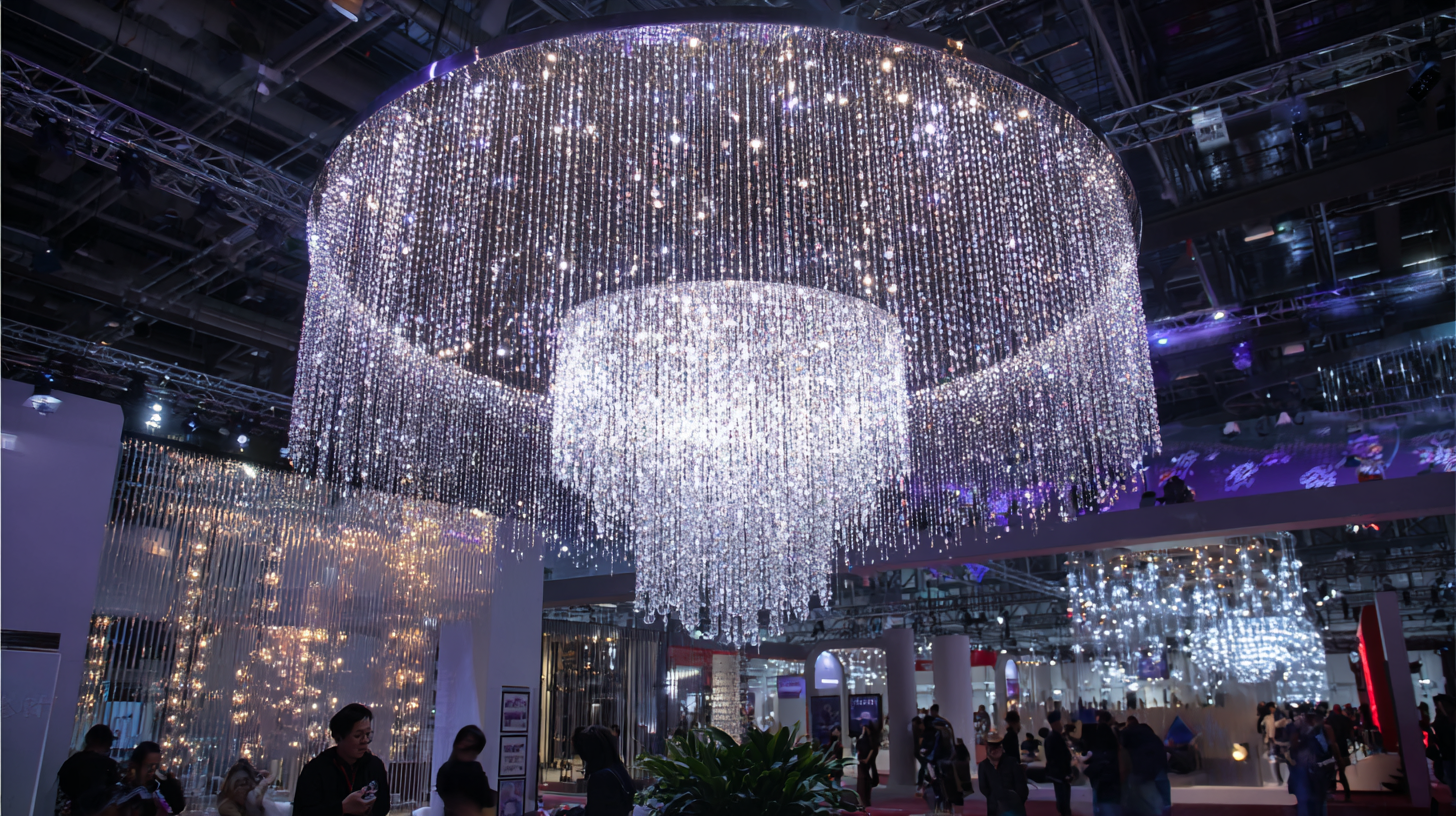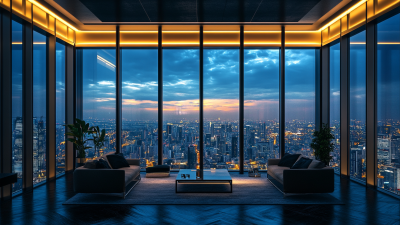Edison LED Lighting
Projects
Exploring the Impact of Led Pendant Lights Industry Trends at the 138th Canton Fair 2025 China
The 138th Canton Fair in 2025 is poised to showcase the latest trends and innovations in the LED pendant lights industry, a segment that has experienced significant growth in recent years. According to a report by Grand View Research, the global LED lighting market is expected to reach USD 105.4 billion by 2026, with pendant lights contributing substantially to this expansion. As consumers increasingly prioritize energy efficiency and design aesthetics, the demand for LED pendant lights has soared, reflecting a broader shift towards sustainable and stylish lighting solutions.

The Canton Fair, being one of the largest trade events in China, facilitates a platform for manufacturers, designers, and buyers to explore cutting-edge products and industry insights, positioning LED pendant lights at the forefront of this dynamic evolution. With the integration of smart technologies and eco-friendly materials, the trends identified at this event will not only highlight the current state of the industry but also pave the way for future advancements.
Impact of LED Pendant Lights on Modern Interior Design Trends
The 138th Canton Fair in 2025 is set to showcase the latest trends in LED pendant lights, which have become a significant aspect of modern interior design. As the focus shifts toward minimalism and functionality, LED pendant lights embody these design principles with their sleek aesthetics and energy efficiency. According to recent industry reports, the global LED lighting market is expected to reach USD 105 billion by 2025, with pendant lights accounting for a significant share due to their versatility in both residential and commercial spaces.
Incorporating LED pendant lights into modern interiors not only enhances visual appeal but also aligns with sustainable living practices. Designers are increasingly favoring these fixtures for their ability to provide ambient lighting while reducing electricity consumption. For instance, a study shows that LED lights consume up to 75% less energy than traditional incandescent bulbs. This trend reflects a broader movement in interior design where functionality meets style, influencing homeowners and designers alike.
Tips for choosing the perfect LED pendant light include considering the size of the room, the height of the ceiling, and the overall theme of the space. Opting for a design that complements other decor elements can create a cohesive look while maximizing the lighting effect. Additionally, exploring adjustable pendant lights can offer flexibility for varying moods and activities within a room.
Impact of LED Pendant Lights on Modern Interior Design Trends
Growth Projections for the LED Lighting Market Through 2025
The LED lighting market is on a promising trajectory towards 2025, with significant growth anticipated across various segments. According to TrendForce's latest report, the general lighting sector is set to rebound, fueled by a surge in demand for LED replacements during renovations. This trend highlights the ongoing shift in consumer preferences towards energy-efficient solutions, paving the way for innovation and increased market competitiveness.
In Vietnam, the LED lighting market is projected to escalate from USD 735 million in 2024 to USD 1.22 billion by 2033, representing a compound annual growth rate (CAGR) of 5.9%. This growth is reflective of stronger urbanization trends and a growing focus on sustainability. Similarly, the smart lighting market is forecasted to grow significantly, driven by the integration of the Internet of Things (IoT) technologies.
**Tips:** When considering LED lighting solutions for your projects, focus on energy efficiency and longevity to maximize your investment. Additionally, stay updated on the latest technological advancements to ensure that you choose products that not only meet your current needs but also adapt to future demands.
Sustainability Trends and Eco-Friendly Innovations in LED Lighting
The 138th Canton Fair in 2025 is set to showcase significant advancements in the LED pendant lights industry, particularly emphasizing sustainability trends and eco-friendly innovations. As global awareness of environmental issues continues to rise, the LED lighting sector is witnessing a shift towards green technology. According to a recent report from the International Energy Agency, the adoption of energy-efficient LED lighting is projected to reduce global energy consumption for lighting by 50% by 2030. This underscores the industry's commitment to eco-friendly practices and sustainable development.
In addition to energy efficiency, manufacturers are increasingly focusing on utilizing recyclable materials and minimizing carbon footprints during production. Innovations such as solar-powered LED lights and smart lighting systems that adjust based on ambient conditions contribute to further sustainability. With the market for LED lighting expected to exceed $100 billion by 2025, the emphasis on environmentally friendly solutions will be crucial in meeting consumer demand while promoting greener practices.
Tips: When exploring LED pendant lights, consider looking for products with high energy efficiency ratings, such as those compliant with the ENERGY STAR certification. Additionally, supportive schemes for manufacturers focused on renewable materials can lead to greater long-term savings and investment in sustainable technologies. Stay informed about the latest innovations in the industry to make eco-friendly choices that align with your values.
Consumer Preferences: A Shift Towards Smart LED Lighting Solutions
The shift towards smart LED lighting solutions is increasingly evident in consumer preferences, particularly highlighted at the 138th Canton Fair in 2025. As technology advances, consumers are gravitating toward energy-efficient options that not only reduce electricity costs but also provide innovative features such as remote control and automation. This trend aligns with the broader movement towards smart home solutions, where integrated lighting systems enhance both functionality and aesthetic appeal.
The demand for smart LED lights is not only a response to contemporary household needs but also reflects a growing awareness of sustainability among consumers. With the global market for smart lighting technologies expanding, manufacturers are focusing on developing products that cater to this demand. New designs are increasingly incorporating user-friendly interfaces and connectivity options, making them an attractive choice for tech-savvy consumers seeking to enhance their living spaces while contributing to energy conservation efforts. The emphasis on customizable ambient lighting solutions also indicates a significant shift in how consumers perceive and use lighting within their homes, marking a transformative phase in the lighting industry.

Regional Variations in LED Pendant Light Demand at the Canton Fair
The 138th Canton Fair in 2025 is set to showcase the latest trends in the LED pendant lights industry, revealing significant regional variations in demand. Different regions are influenced by factors such as local design preferences, energy efficiency concerns, and varied economic conditions. For instance, urban centers with higher disposable incomes may lean towards more intricate and high-end designs, while rural areas might prioritize practicality and affordability in their choices.
Moreover, the fair will highlight how cultural influences shape consumer preferences for LED pendant lights. In some regions, traditional aesthetics might play a crucial role, leading to a demand for fixtures that combine modern technology with classic designs. Meanwhile, environmentally conscious regions are likely to drive demand for sustainable and energy-efficient lighting solutions. The Canton Fair serves as a critical platform for manufacturers and distributors to understand these regional dynamics, allowing them to tailor offerings to meet diverse consumer needs effectively.

Related Posts
-

2025 Global Market Trends: Top 5 Reasons to Invest in LED Strip Technology
-

Ultimate Guide to Enhancing Retail Efficiency with Shop Lighting Strategies
-

Exploring the Unique Features and Applications of LED Strip Lighting for Global Buyers
-

What is the Future of Best LED Down Lights? Insights and Trends for Global Buyers
-

10 Best Landscape Lighting Ideas to Transform Your Outdoor Space
-

Exploring the Efficiency of Linear Lighting Solutions Against Traditional Alternatives
